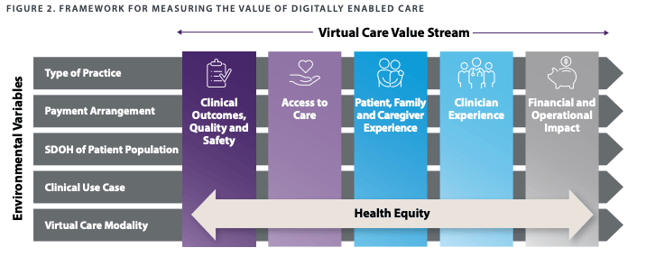How Can I Measure the Success Of My Telehealth Program?
-1.png)
-1.png?width=677&name=_Blog%20Graphics%20(6)-1.png)
Success comes down to value. Value, ultimately, for your patients which can be translated into dollars and cents and happy customers. Given the many healthcare initiatives hospitals can proceed with, why choose second opinions? And if you do, how do you measure the success of that program?
During the Covid-19 pandemic, the value proposition of a virtual or ‘Digitally Enabled’ healthcare program was abundantly clear. Enabling patients and even healthcare workers to stay home when and where possible freed up essential space in hospitals and other facilities and reduced the risk of transmission.
Though the pandemic is not yet over, healthcare – and indeed much of daily life beyond healthcare – has started to look towards the post-pandemic future. What will become of the virtual care infrastructure already established? Signs point to much of this infrastructure becoming permanent fixtures within the United States healthcare landscape, but measurement of the value of these programs will need to be reassessed if they are to stay.
Why is a second opinion program valuable for my organization?
The larger umbrella that a second opinion program falls under, digital health, was identified by strategic planners as their top 2021 priority. “Investing in technology and people to grow telehealth volumes was the number one strategic priority reported by every organization and respondent type in our survey,” said Advisory Board’s Colin Gelbaugh. He recommends that providers think about how their telehealth goals have shifted over the past year, and about how they can maintain their momentum.
Expanding telehealth beyond virtual visits, to remote and asynchronous services, is important for maintaining this momentum. For this reason, virtual or online second opinions are being adopted by providers as a key tool in their virtual care toolbelt. As with other virtual healthcare programs, the primary value of a second opinion program is to expand your reach beyond both your local geography and your brick-and-mortar facilities.
Virtual care has also had high rates of satisfaction among both patients and physicians, and both groups have indicated a desire to continue to leverage these remote services beyond the COVID-19 pandemic. Considering high rates of physician burnout, listening to how they prefer to work is important.
How do I measure the value of my second opinion program?
This is a common and important question in today’s healthcare landscape, particularly as the Covid-19 pandemic spurred a dramatic increase in virtual healthcare in the United States. The American Medical Association, in collaboration with Manatt Health, chose to tackle this question by creating their 'Return on Health' framework by which the value of digitally enabled care can be assessed.
Here they identify six different value streams of virtual care programs. Each of these streams has separate metrics used to measure the value of each of those programs. Three of these (Clinical Outcomes, Quality and Safety; Access to Care; and Patient, Family and Caregiver Experience) are related to patient care and experience. Measurement metrics within these categories include, but are not limited to, ‘mortality measures’, ‘number of visits to correct diagnosis’, ‘median travel time to care per patient', and ‘Patient Activation Measure (PAM)’.
The other two value streams, Clinician Experience and Financial and Operational Impact are internally focused on team satisfaction and revenue, and include ‘Mini-Z Physician Satisfaction Surveys’, ‘Percentage of referrals completed’, and ‘Telehealth program expenses.’
Cross-cutting the other five is an essential value stream: Health Equity. This value stream seeks to understand the impact of how a virtual care program impacts other value streams for historically marginalized patient populations. “Unless digitally-enabled care models are designed with health equity at the forefront, they can miss opportunities to advance health for and exacerbate inequities impacting historically marginalized populations.”
Hopefully, these metrics can help you both measure and think about the value of your second opinion and other digital health programs. Applying these value streams can help you measure the telehealth success for your organization, your patients, and the larger healthcare landscape.






